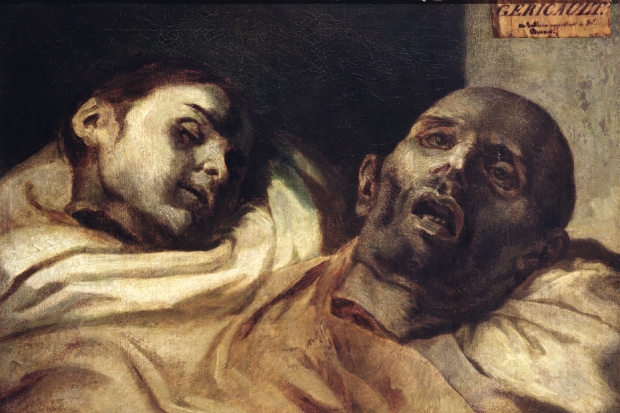A severed head, argues Frances Larson in her sprightly new book, is ‘simultaneously a person and a thing… an apparently impossible duality… an intense incongruity’. History is ‘littered’ with such heads. Pilgrims visit them: the heads of St Peter and St Paul, for example, are thought to be in the high altar of the Basilica of St John Lateran. Artists are inspired by them, especially the erotically charged ones in the stories of Salome and Judith. Medical students dissect them, thereby acquiring the ‘necessary inhumanity’ of their profession. And Americans pay $50,000 to have their own heads cut off — cryonicists prefer the term ‘cephalic isolation’ — and preserved in thermos flasks of liquid nitrogen. ‘Could decapitation,’ asks Larson, ‘be just another stage in a person’s life?’
She begins her story at the Pitt Rivers Museum in Oxford (of which she has co-written a history), where shrunken heads — tsantsas — are displayed in the ‘treatment of dead enemies’ section. They were made about a century ago by the Shuar tribe of Peru and Ecuador, by removing the skull, flesh and muscle, then repeatedly filling the skin with hot sand and pebbles; the idea was to harness the power of the soul, and once that had been achieved, in ceremonies that lasted years, the heads were disposable.
Some were sold to travellers, and demand for them grew in Europe and America. The Shuar wanted guns, which were much better for headhunting than spears, and the price established for one gun was one shrunken head; so some Shuar began to murder for the market, and tsantsas became ‘a kind of macabre tourist art’. Of the 10 heads in the Pitt Rivers, two turn out to be of sloths, two of howler monkeys, and of the six human ones three are ‘fakes’.








Comments
Join the debate for just £1 a month
Be part of the conversation with other Spectator readers by getting your first three months for £3.
UNLOCK ACCESS Just £1 a monthAlready a subscriber? Log in